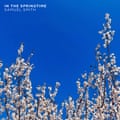It was 3 December 2020 when I found out. For months I had been battling stiffness in my right arm. Now, the test results had come back from the lab. “You do know what’s going on here, don’t you?” my neurologist inquired, peering over the top of his notes. I could feel all the air being sucked out of the room. Suddenly I was hovering between a life lived and a new life to be faced. “You’ve got Parkinson’s.”
Fast forward to my living room a few weeks later. I was perched over my guitar and in a tailspin. Playing should have been as easy as breathing; instead, I was paralysed – unable to play a note. The voice in my head screamed “play, play” but my hand wouldn’t move.
It felt like a fast descent. Just 44, I was barely able to tap my right foot in time, complete basic tasks such as whisking an egg or get consistent sleep due to increasing stiffness and pain in my shoulder. There was no choice but to get on the right medication – five pills a day – and wait it out.
Over the course of the next few months, the feeling slowly returned to my arm, and I started to play again. I was euphoric. I remember thinking: “I have no idea how long this will last, and I’m never taking this for granted again.” My wife, Nammi, would often head to bed, leaving me perched on the kitchen steps, writing and singing into the night.
Songs were pouring out, the best I’d ever written. I couldn’t play anything as fast or rhythmical as I used to, but it turned out that “different” was unlocking melodies and lyrics I had never accessed before.
“You really need to make a record,” became a familiar refrain from family and friends. I had been in duos and bands and made self-released albums all my life but – perhaps symbolically – this would be the first with just my name over the door. I was in a scarily open-ended fight with my body, and creativity felt like the only way for me to process it, escape from it, or to take it head on.
after newsletter promotion
I had so many questions spinning round my head. Would I even be able to walk in a few years, let alone play guitar or make a record? Was this the last thing I would create, and what legacy would it leave behind for my family? The stakes felt so high.
With all that additional pressure, I knew I needed a safety net in case I got to the studio, my symptoms spiked and I couldn’t play. My 22-year-old cousin Charlie, a fabulous young musician who I had already earmarked to sing and play flute on several tracks, agreed to learn all my guitar parts just in case. “Let’s make this album an absolute banger, mate!” he said.
So I dug into my musical heartland, Nashville – a city that is home to so many of my favourite bluegrass and acoustic artists. I made a list and reached out to all my heroes explaining my diagnosis and that this could be my last album. The response took my breath away. These were some of the world’s best session players and musicians – with 27 Grammys between them. Guitarist and banjo player Ron Block (who works with Alison Krauss), pianist Matt Rollings (who has played with Lyle Lovett), fiddle legend Stuart Duncan and mandolin sensation Sierra Hull – they all said yes. Rollings later told me that there’s a longstanding joke among session players in Nashville that you only “connect” with one in 40 records you play on. “Yours was that record,” he told me. This was to become a huge source of confidence and motivation.

Lastly, I needed a studio in the UK to record, somewhere I felt supported and safe. The name Sam Lakeman kept coming up, an engineer and musician who works and tours with his wife, the Irish folk singer Cara Dillon. Their involvement would come to define the creation of the album, and their Somerset home quickly became its heartbeat. From the moment Charlie (who thankfully never needed to step in and save me), double-bassist Nick Pini and I met in their kitchen, my anxieties melted away in a wave of laughter, tea and biscuits. Nick said he felt there was “a magic happening”.
The songs grew in strength with this collective energy behind them. None more so than On My Side, written just months after my diagnosis, and the only song on the record to directly address the topic: “This could be the hardest part / A life well lived – now blown apart / On shaky ground – lost and found / Who will be there on my side?”
I can’t deny that this was hard ground to dig into. By the time Sam sent the seven tracks over to Nashville for the extra stardust to be added, all of us had forged lifelong bonds.
For me, In the Springtime represents renewal, rebirth and hope. I don’t know what the future holds – and it is a sobering reality that I already can’t play half the songs on the album. However, my resolve is strong. Our ability to impact on those around us doesn’t end with trauma or a diagnosis – quite the opposite. The act of being creative can reduce anxiety and depressive feelings and improve the function of our immune systems. Its healing potential, for those with Parkinson’s and beyond, appears huge, but the academic research is scattered and, so far, there has been limited engagement from the creative industries. Let’s start to change this – by empowering those who need it most.
-
In the Springtime is out now on streaming platforms. All proceeds will go to Parkinson’s UK

